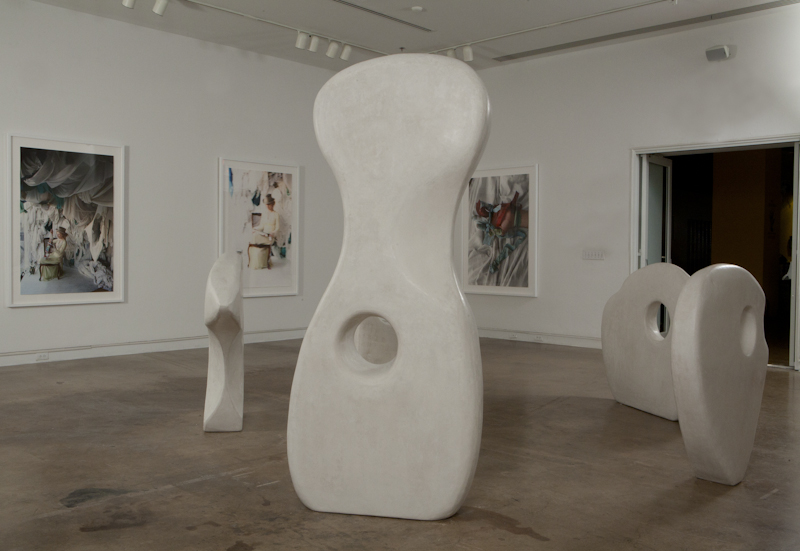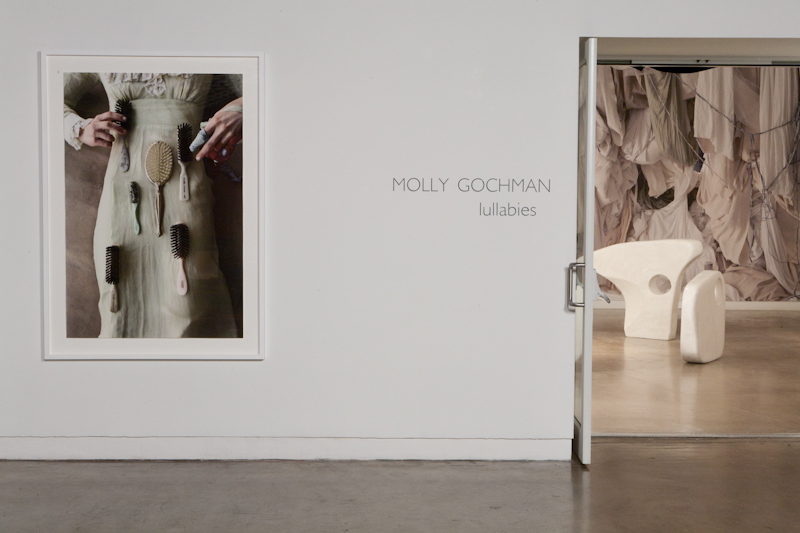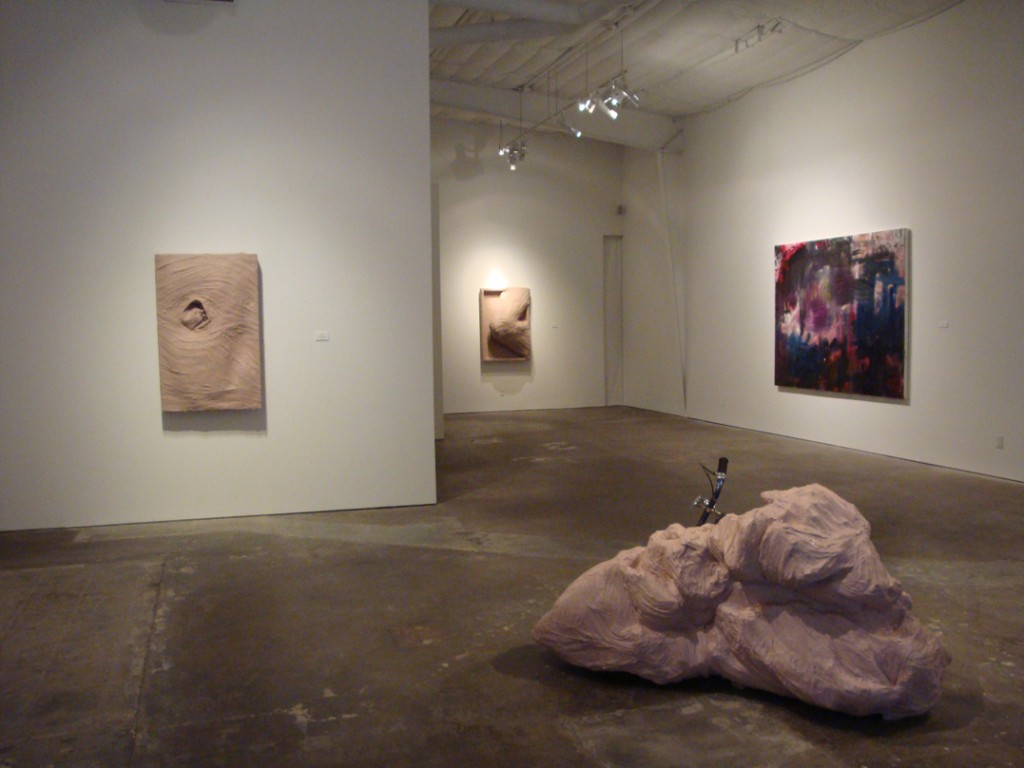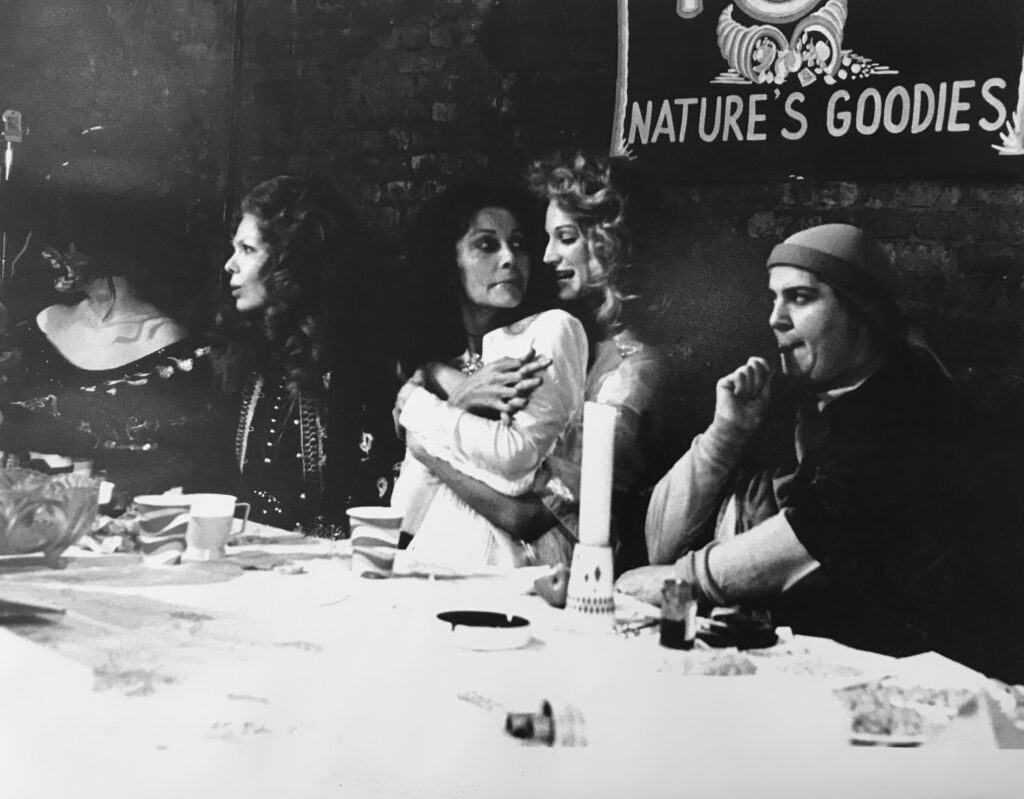Mary Beth Edelson
McKinney Avenue Contemporary (the MAC)
3120 McKinney Avenue
Dallas, Texas 75204
November 6 – December 12, 2010
Opening Reception: Saturday, November 6th 5:30 – 8:00 PM.
The MAC is open Wednesday through Saturday, 11:00 AM – 9:00 PM.
McKinney Avenue Contemporary (The MAC) is pleased to announce one of the main events at the MAC this year: two exhibitions of work by two female artists of different generations who articulate strong views on social realities: Mary Beth Edelson and Molly Gochman. Both exhibitions are sponsored by OUTPOST NYC DCG – Deborah Colton Gallery.
Mary Beth Edelson, emerged in the 1960s on New York’s SoHO scene as a groundbreaking feminist artist. Her conceptually-based work activates a variety of women’s and human rights issues. Molly Gochman, a Houston and New York-based younger artist, formulates ideas of community and subjective interconnectedness in her growing oeuvre, characterized by fluid visuality and the use of multiple media. Edelson and Gochman will present both installed and performative works in their respective exhibitions “There is Never Only One Game in Town” and “Lullabies”at the MAC.
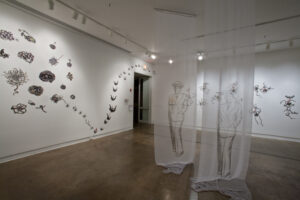
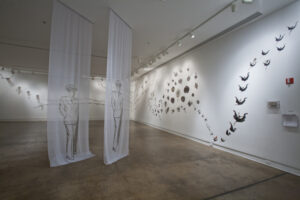
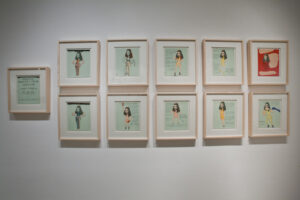
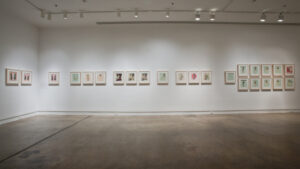
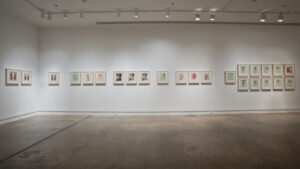
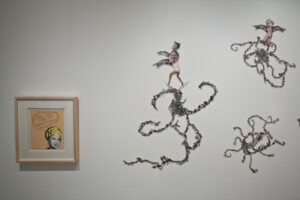
ARTIST ESSAY:
Mary Beth Edelson: Humor is the Best Game in Town
Kathleen Wentrack, Ph.D.
New York-based artist, Mary Beth Edelson, is recognized internationally for her break-through art works in far ranging mediums and her contributions to the feminist revolution. Since the 1960s Edelson has been impacting art making and activism while challenging the entrenched cultural dogmas of the day.
On view at the MAC in Dallas from November 6th until December 11th is a select group of 24 painted drawings from 1981–97. Curated by Liutauras Psibilskis, Deborah Colton, and Liliana Bloch, this series is titled There is Never Only One Game in Town. Equally strong, the historically significant large-scale wall collages will be on view as well as the premiere of the video ” Making Eye Contact” conceptualized by Edelson with video production by Gregory Wendt.
Thematically, the exhibited body of work celebrates a variety of characters such as the femme fatale, the trickster, movie stars, and the mythological folk figures of Baubo and Sheela-na-gig. Diverse as these female types appear, they are connected through the trope of humor as Edelson states:
Humor is a mode of speech that is indirect and ambiguous and, therefore, can have multiple interpretations. It can potentially disrupt dominant meanings and the social order while protecting the joker from consequences that might occur if the same message were delivered in a serious mode. Humor sabotages critics, for unlike spoken language, laughter does not belong to a linguistic code and, therefore, has the possibility of creatively breaking that mold while taking advantage of humor’s natural attraction.
Humor is a political devise in the series There is Never Only One Game in Town. Many of the drawings use a variety of materials including silkscreen, ink, acrylic, and fabric on jute tag to form pictures based on Edelson’s desire to “re-script Hollywood” as it relates to the construction of women in their films. Edelson’s research of movies from the 1920s until the present day inspired her to be especially curious about films that place a gun in a woman’s hand—the ultimate symbol of male power—and how that representation changed over time according to women’s status and the circumstances of that time span.
She appropriated images of women played by movie stars including Marilyn Monroe, Gena Rowlands, Marlene Dietrich, Lynda Carter, Angelica Houston, Judy Garland, and Mae West whose sultry quote “there is never only one game in town” was borrowed for the title of this series. The artist then gave the characters a new identity as she describes:
My intention was to isolate these images from their original context in the film to project my own story on these subjects as self-defining agents that defy the production of Hollywood stereotyping.
Bursting with irony and humor, these drawings engage the viewer by way of the unexpected text and titles that accompany their forthright images. Several works are based on a silk-screened photograph of a sassy, young Judy Garland who asks questions that speak directly to the viewer. Other images draw on cross-cultural traditions for alternative spiritual histories as in the multi-armed Marilyn Monroe as the Hindu Goddess Kali.
Accompanying the painted drawing series are a selection of Edelson’s wall collages installed on a large scale for the first time in the United States. The wall collages developed concurrent with the artist’s well-known collage posters of the 1970s in which reproductions of historical paintings by male artists are parodied by pasting photographs of female artists’ faces over the male actors’ images. For example, Some Living American Women Artists/Last Supper (1971-72) is the first of the five collage posters in which the artist insisted on an alternative vision of society that included women in positions of power. For this first poster Edelson collected photographs of women artists and collaged their faces over those of Jesus and his disciples on a reproduction of Leonardo da Vinci’s Last Supper (1498). All five posters in the series—recently acquired by the Museum of Modern Art in New York for their permanent collection —make use of appropriation in an effort to critique existing institutional structures and the history of western art. While these posters continue the social commentary of collage initiated by Dada artists almost a century ago, it is Edelson’s wall collages that make her contribution unique to the history of collage art and feminist art history.
The genesis of the wall collages, unlike the posters, was one of happenstance and playfulness, evolving from scraps leftover from the laborious pre-computer process of making the posters. These works celebrate women’s art collectives such as A.I.R. and Heresies, while others are cameos devoted to a specific artist and the women in her milieu. Each of the wall collages presents different subjects, stories, and themes while they all share a rambling unique vine or web-like structure. For example, Web Works/Heresies (1976) is built through a repetition of individual faces that creates the appearance of animation as in Good Meeting, (1976) sourced from the Death of the Patriarchy/A.I.R. Anatomy Lessons poster. At first glance Good Meeting appears to be a dragonfly but on closer inspection it is composed of a set of wings and the faces of several women. The dragonfly’s head begins with the image of Rachel bas-Cohain, then Ana Mendieta and Edelson, and concludes with ten prints of Nancy Spero’s face, diminishing in scale to form the tail. This collage provides an excellent example of how her repetitious progression creates a sense of movement influenced by the structural duplication of , in this case, Spero’s face.
Alongside, and often in conjunction with, the portrait-based wall collages, several themes reoccur in Edelson’s wall collages including Medusa, the Bird and the Snake Goddess of Egypt, Venus, Sheela-na-Gig, and Baubo. Laughing Medusa (1976) was made in a similar manner from remnants of poster pictures and other photographs of fellow A.I.R. members that the artist often took. The central face in this work is of Anne Healy with her head tilted back slightly holding a wide-mouthed laugh and framed by the smaller heads of A.I.R. members. Eight strands of wildly protruding hair—each strand repeating a separate individual’s head—moves with twists and turns like a snake, as if it were Medusa’s own hair.
The artist has frequently employed the figures of the Sheela-na-gig and Baubo in diverse mediums since the early 1970s, a moment when feminists sought out sources of power and spirituality that reflected not only an alternative to western religious structures but also spiritual histories in which women held significant positions and power. Found on the British Isles, especially in Ireland, the Sheela-na-gig is a female figure, crouching with legs splayed open exposing her genitalia. Dating back at least to the Middles Ages, these crudely shaped Sheela’s have been found near churches, bridges, and castles, and are generally regarded as folk deities imbued with powers of renewal, birth, and death according to the scholar Barbara Freitag in Sheela-Na-Gigs: Unraveling an Enigma (2004). Edelson combines the Sheela imagery with faces of women she wishes to acknowledge ultimately imbuing the figures with life-giving power as in Buffy Sheela (1976) that is composed of the heads of fellow artists Buffy Johnson, Michele Stewart, Betye Saer and Yoko Ono.
The web-like structure was expanded for the cameo series that focuses on and celebrates individual women. The format for each cameo is to collage the artists image on a reproduction of a bold self-assured nude, and it is from this central body that the web expands and unfolds to include the images of artists who may have mutually influenced each other, engaged in dialogue and thus created a circuit of people and ideas all active and supportive within this web. In the center of Cameo: Nancy (1979), a web presents the many faces of women associated with Nancy Spero with a special emphasis on her long alliance with the women of A.I.R. Gallery.
Many of the wall collages record women active in feminist art groups, but they also function as historical documents that describe the organizational and the working processes of a community in the process of implementing a revolution. The web-like shapes in the wall collages break from the confines of framing to visualize the collective and collaborative structures of these groups who are not represented in rows but are connected to each woman through the next. In Edelson’s hands, the portrait then becomes a living document in stark contrast to the western tradition of portraiture or historical painting.
MAC’s exhibition of Mary Beth Edelson’s art, presents a rich selection rarely seen together in the U.S. that delves into the artist’s deep oeuvre. Edelson remains one of the key feminist artists active and influential today, and the work in this exhibition gives testimony to its expansive relevancy.


